One of the best preserved walled medieval centers in Europe can be found in Tallinn, Estonia, making it popular with travelers. Estonia’s second largest town of Tartu has been a significant university town since the 17th century, drawing visitors and international students. But Estonia’s third largest town of Narva, separated from Russia by the Narva River, draws far fewer visitors.
Around 97% of Narva’s 60,000 residents speak Russian. It’s not only a strategically significant destination, it’s extremely interesting to visit for viewing two medieval fortresses side by side across the river, spanning vastly differing geopolitical nations.
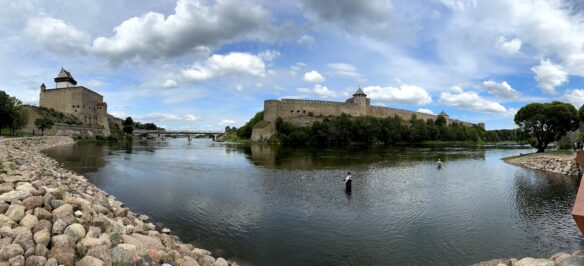
Train Travel Around Estonia is Easy
Estonia’s entire population is just 1.3 million people. That makes nearby Finland’s population of 5.5 million seem massive, which it isn’t as Chicago’s metropolitan area is home to 9.5 million people. Estonia is generally sparsely populated, but it has a clean, comfortable and efficient train system that connects its biggest towns.

Getting around Estonia by train in 2023 feels like a cinch compared to major cities in the USA, United Kingdom and other large countries with huge train stations. Train stations in Estonia are not massive and information is clearly displayed. There are also no splitting trains in Estonia. Last year, I lost two hours of time traveling in the United Kingdom from Oxford to London because I was sitting in the wrong section of a train that split in Reading. Train splitting does not happen in Estonia, thankfully!
Narva Highlights
Narva Castle (Hermann Castle)
Established around 1256, Narva Castle is also known as Narva fortress and Hermann Castle. The medieval castle in northeastern Estonia was originally built during Danish rule. It’s Estonia’s best preserved defense structure.

Spanning over 700 years of history, Danes, Germans, Swedes and Russians have ruled Hermann Castle. Now part of Estonia, it houses the Narva Museum. The castle was restored during the 1970s and 1980s before opening as a museum. It was significantly damaged during World War II. A permanent exhibition showcases the history of Narva. It also houses around a dozen temporary exhibitions.
I had a fantastic meal at Restoran Rondeel in Hermann Castle. Both rustic and elegant, the restaurant offers hearty Estonian fare atop white tablecloths for reasonable prices. I also had one the most interesting conversations of my trip with a waitress there, as we discussed the current geopolitical situation, and the problem with disinformation across different media platforms.
Ivangorad Fortress Views (Russia)
Ivangorod Fortress is practically a stone’s throw across the Narva River from Estonia. The Moscovian Grand Prince Ivan III commissioned the Russian medieval castle in 1492. It subsequently grew into the town of Ivangorod, Leningrad Oblast, Russia.
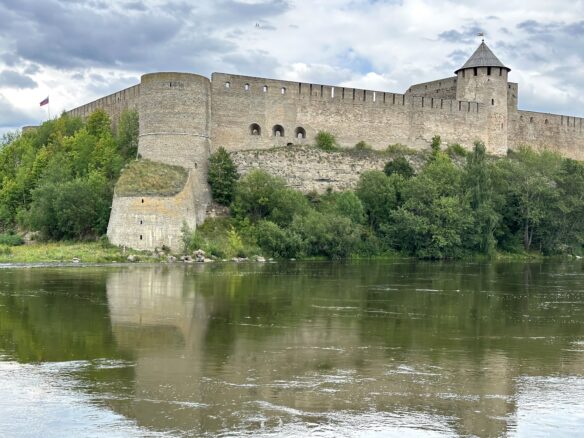
Located on the east bank of the Narva River, Ivangorad Fortress rests along the international border of Russia and Estonia. You don’t even have to set foot in Russian territory to get sweeping views of the impressive fort from Narva’s charming promenade. A fun quirk is watching both Estonian and Russian fishermen on both sides of the Narva River.
Narva Town Hall
Narva Town Hall is one of just three buildings in Narva that survived post World War II. The town was subject to an intense bombing campaign during that global conflict. Commissioned by Swedish King Charles XI in 1688, the Baroque-style building blends German, Swedish and Italian architectural influences. Completed in 1691, the project was led by the master architect George Teuffel from Lubeck, Germany.
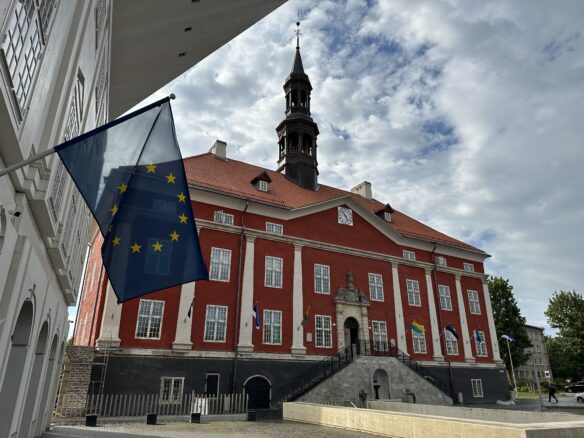
The Narva Town Hall also houses the Narva Tourist Information Center. A significant highlight of visiting the building is a virtual reality tour of what Narva looked like prior to World War II. There is also a spacious cafe around the corner for coffee, cake or a light bite (as well as charging my phone).
The Narva River Promenade
The Narva River flows 77 kilometers north into the Baltic Sea. It’s the largest Estonian river by discharge. The promenade is lovely for a stroll, while taking in views of Ivangorod Fortress. This is a popular area for jogging, biking, picnics and fishing on both sides of the river. For tourists, it’s simply a charming place to take in and ponder the current geopolitical situation.
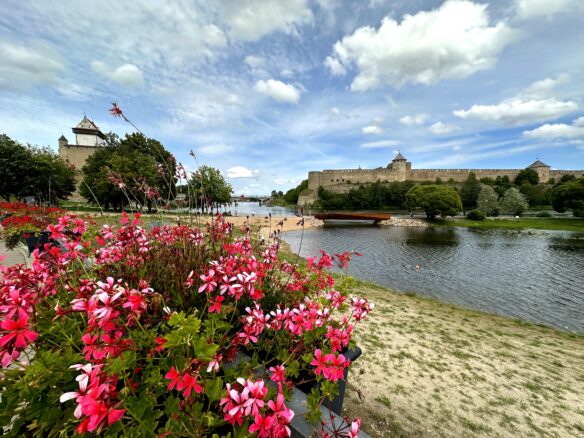
Narva, Estonia Hotels
Narva Hotell
Modern rooms at Narva Hotell offer a comfortable stay in the heart of town. Rooms located on three floors have a mini-bar, TV and free wi-fi. Suites and junior suites feature a private sauna. The property has an on-site restaurant, lobby bar, conference room, banquet hall and a parking lot with security.
Narva Castle Rooms
Apartments at Narva Castle Rooms offer a comfortable and unique stay. The property offers access to a terrace, free private parking, barbeque facilities and free Wifi. Their traditional on-site restaurant is open for dinner and lunch. A continental breakfast is available, which includes fresh pastries and fruit.
Conclusion
Narva, Estonia is a unique destination to visit for those looking to get off the well beaten tourist path. Just 2 and 1/2 hours by train from Estonia’s capital of Tallinn, it’s even possible to visit just for a day trip during long summer days. The sweeping views of Hermann Castle and Ivangorod Fortress leave an indelible memory and were one of the absolute highlights of my travels across Estonia!
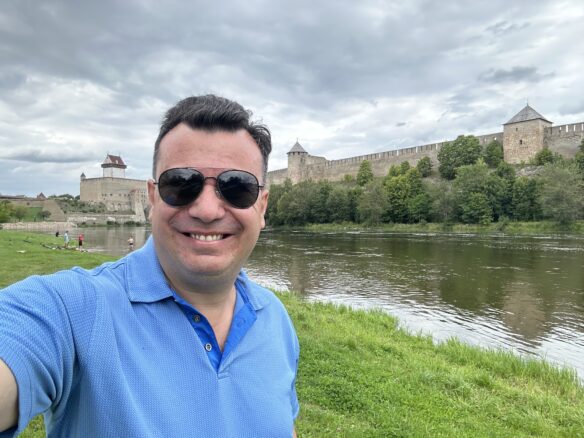
Have questions about visiting Estonia? Leave a comment below or email me at alex(at)wanderlustmarriage.com and I can assist you. Thank you for reading and supporting independent travel journalism!

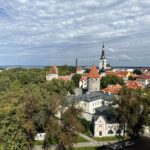


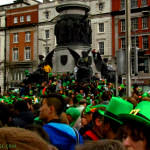

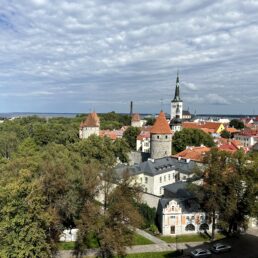 European Union Travels: Visiting all 27 Countries
European Union Travels: Visiting all 27 Countries 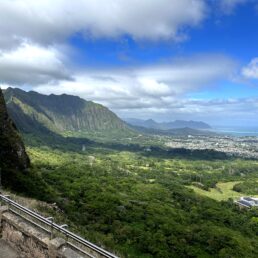 Ways to Save Big Money on a Hawaii Vacation
Ways to Save Big Money on a Hawaii Vacation